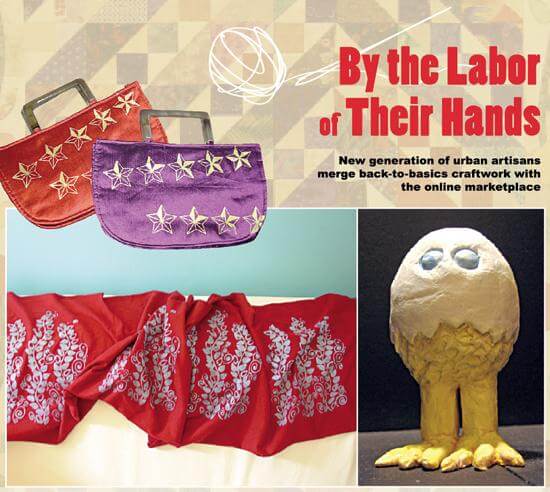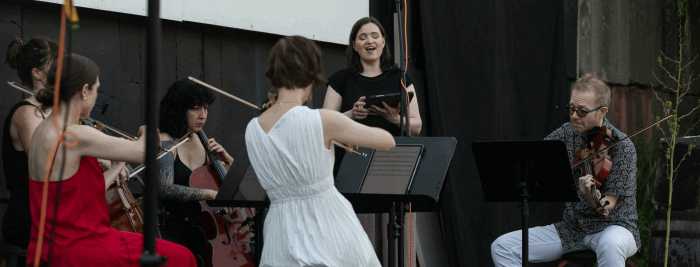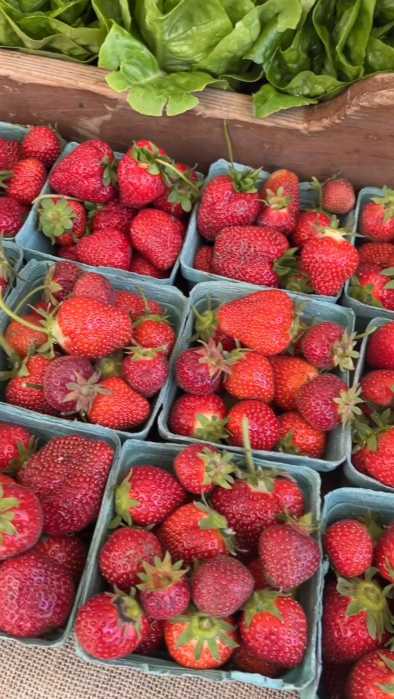By Erin Walsh
This past January, Astoria resident Sam Riviello quit her full−time job as an office manager to pursue her passion of jewelry making.
After completing a three−month certification course at Studio Jewelers in Manhattan, Riviello, 26, has been selling her designs on Etsy.com and in boutiques both locally and nationwide as her sole livelihood ever since.
“People are turning their hobbies into full−time jobs,” said Riviello, who sells her wares under the name Stars For Sydell. “You can make a living from it, if you want to put the hard work into it, just like anything else.”
She is just one of a growing cadre of devotees of the so−called “handmade nation,” predominantly young, educated urban dwellers, who have assembled their own homespun careers by selling handmade wares on Internet sites such as Etsy.com and at local boutiques and independent designer showcases.
The urban crafts movement, which is the subject of a book, “Handmade Nation: The Rise of DIY, Art, Craft and Design,” penned by Faythe Levine and Cortney Heimerl, and an upcoming documentary directed by Levine, has been steadily on the rise in recent years. Brooklyn−based Etsy, a virtual clearinghouse for all things handmade, boasts 1.6 million users and averages 400 million page views per month, said Etsy spokesman Adam Brown. The site, which launched in 2005, has become the go−to destination for crafty items online.
There are more than 1,100 Queens−based sellers on Etsy, with 160 based in Astoria, said Brown. Etsy is the Macy’s of do−it−yourself retailers, peddling everything from photographs and candles to furniture and clothing. Visitors to the site can choose how to shop; stores are organized by categories such as Color, which is sorted by the exact shade of the color one desires, to Shop Local, where shoppers can home in on merchants in their city or neighborhood. The majority of the nearly 200,000 sellers are U.S.−based, with roughly 150 countries represented on the site, said Brown.
DIY disciples have several theories to explain the phenomenon’s increasing popularity.
Astoria crafter Bonnie Skiver, 25, who maintains two shops on Etsy — B.Sharpe Designs and bonnie.skiver.photography — views the return to handmade items as a back−to−basics creative outlet in the frenetic digital age.
“The rest of our lives, and the rest of the world, is digital, and a lot of people are bemoaning that craftwork is dying,” she said. “I started the business to do something physically with my hands. It’s therapeutic doing it, and having a product in front of you is very satisfying.”
Others, like Sandy Ruffin, 29, an Astoria resident who’s been selling knit accessories and sculptures on Etsy under the moniker of sandyliz since August, sees homemade goods as a eco−friendly alternative to an increasingly disposable society.
“There’s been a big backlash against American consumerism — the whole ‘use it and throw it away’” mentality, she said. “It’s more green.”
Some commonalities exist between those Queens residents who deal in handmade goods. Nearly all cite growing up in artistic households, and being exposed to crafts at an early age. Others have college degrees in art−related fields, and moved to New York to pursue their vocations.
The reality of New York rents forced some artisans to support themselves with other jobs. Those like Skiver continue to exercise their creative impulses by selling their handmade goods on Etsy, in local boutiques such as Astoria’s Candy Plum and Long Island City’s SITE, and at neighborhood craft fairs, including the Second Annual Holiday Flea Market, recently held for three consecutive Sundays at Waltz Astoria coffee and wine bar.
After moving to New York with a degree in painting and drawing from the University of Georgia under her belt, Ruffin decided that the art gallery scene, what she initially intended to pursue, didn’t appeal to her. So, in addition to her full−time job as an events coordinator for an Internet service provider, Ruffin spends 10 hours per week knitting and sculpting.
Riviello was motivated, in part, to start Stars For Sydell to raise money for fibromyalgia research and awareness, donating 20 percent of her profits to the cause, she said. It’s an issue that resonates with Riviello, as her mother, Sydell, suffers from the disease.
“I always say that the Stars For Sydell is to put the stars back in her eyes,” she said.
For Skiver, who works as a freelance graphic designer and photographer, in addition to teaching arts−based after−school programs for a New York City nonprofit, selling her creations full−time would be ideal. In the interim, she’s concentrating on doing what she loves and gaining greater recognition for her designs.
“My goals are to build a bigger fan base on Etsy and to keep selling and coming up with new things and to build my business,” Skiver said. “Because I do other things, my greater satisfaction is to have crafts as my creative outlet.”





































